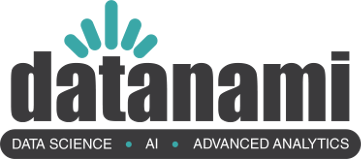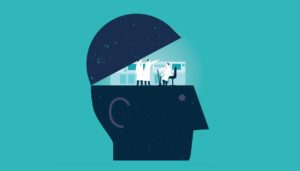

(winyuu/Shutterstock)
It’s that time of year again – time for predictions! Thank you for patiently waiting while Datanami compiled 2021 predictions from the assorted predicters. We’ll kick things off with predictions about a most pertinent topic: data science.
If there’s one thing that the COVID-19 pandemic in 2020 made clear, it’s that organizations are relying on data more than ever before. To get the most out of that data, shops are going to need to increase their spending on data science, argues Domino Data Lab CEO Nick Elprin.
“Organizations are making dramatic budget cuts in many areas in an effort to overcome the effects of COVID-19 and keep their business viable,” Elprin says. “Yet, in 2021 we predict that many will sustain or actually increase their investment in data science to help drive the critical business decisions that may literally make the difference between survival and liquidation.”
You will see more people with the title of chief data scientist (CDS), says Ira Cohen, who is the co-founder and (naturally) CDS at Anodot. In fact, Cohen says that, by 2022, 90% of large global companies will have a CDS in place. CDSs will also allocate their time differently in 2021. “Fifty percent will be more focused on value creation and revenue generation while 28% will focus on cost savings and 22% on risk mitigation,” he says.
Josh Patterson, the senior director of RAPIDS engineering at Nvidia, says 2021 will bring empowerment to data scientists.
“For too long, enterprise data scientists have been relegated to sampling data or only pre-production development. People with titles such as data engineer and machine learning engineer are the ones who scale workflows into production, often translating code from Python to Java,” Patterson says. In 2021, “data scientists will be able to process massive amounts of data quickly, drastically reducing the need to have code translators.”
Alan Jacobson, chief data and analytics officer at Alteryx, is bullish on the potential to upskill data analysts into full-blown data scientists.
“While it is always important for companies to offer training to employees, the fields of data science and digital transformation are challenging companies to break the mold and deliver new and constantly evolving ways to upskill and deliver ROI” Jacobson says. “Data science has evolved to the point where people don’t need to go back to college to learn. They’ll learn on the job or while at home by encountering new tools and technologies. And with a huge shortage of those with analytic skills, many will start new jobs and careers based on the new skills.”
Tracking changes in data generated by SaaS-based business applications will be the feedstock for more intelligent AI and machine learning, says Joe Gaska, CEO of GRAX.
“Organizations with a focus on artificial intelligence and machine learning will continue to hunger for meaningful training datasets that can be fed into their ML algorithms to spot cause-and-effect change patterns over time,” Gaska says. “To do this, they will turn to their ever-changing datasets in 3rd party cloud/SaaS applications as inputs into these algorithms. This will create pressure for them to capture and ingest every single change in that data over time into their DataOps ecosystem.”
Rachel Roumeliotis, vice president of AI and data content at O’Reilly Media, says machine learning operations, or MLOps, will be important in 2021, as organizations look to connect the last mile in data science.
“ML presents a problem for CI/CD for several reasons,” she writes. “The data that powers ML applications is as important as code, making version control difficult; outputs are probabilistic rather than deterministic, making testing difficult; training a model is processor intensive and time consuming, making rapid build/deploy cycles difficult. None of these problems are unsolvable, but developing solutions will require substantial effort over the coming years.”

Data scientists will be in high demand in 2021, if prognostications are correct (Sergey Nivens/Shutterstock)
Instead of spending time and money building machine learning systems, in 2021, organizations will take a big step forward in terms of using ML systems, says Clemens Mewald, director of product management for machine learning and data science at Databricks.
“In the future, we’ll see enterprise customers moving away from building their own machine learning platforms, recognizing that it’s not their core competency,” Mewald says. “They’ll realize that more value comes from applying ML to business problems versus spending the time to build and maintain the tools themselves.”
We’re still a ways from having intelligent AI robots walking among us. But the conjunction of neuroscience and data science is a rich playground for new ideas, says Biju Dominic, the chief evangelist at Fractal Analytics and chairman at FinalMile Consulting.
“As AI makes rapid strides into unsupervised learning, one-shot learning, and artificial general intelligence, the field will seek inspiration and validation from system neuroscience and computational neuroscience,” Dominic says. “The interaction between the fields of AI and neuroscience will help the rapid growth of both these fields of knowledge.”
Here is a very specific data science prediction from James Bednar, senior manager of technical consulting at Anaconda: Python data visualization libraries will synch up.
“We’re finally starting to see Python data visualization libraries work together, and this work will continue in 2021,” Bednar says. “Python has had some really great visualization libraries for years, but there has been a lot of variety and confusion that make it difficult for users to choose appropriate tools. Developers at many different organizations have been working to integrate Anaconda-developed capabilities like Datashader’s server-side big data rendering and HoloViews’ linked brushing into a wide variety of plotting libraries, making more power available to a wider user base and reducing duplication of efforts. Ongoing work will further aid this synchronization in 2021 and beyond.”
Which is more valuable: metadata or the data itself? The answer from Petteri Vainikka, the president of product marketing for Cognite, may surprise you.
“As the cost and value of data storage continues to gravitate towards zero, and data science teams simultaneously scrambling to convert their existing data warehouse and data lakes into business value, the mountain of evidence pointing to ‘no correlation’ between volume and value of data keeps growing,” Vainikka says. “Whether through manual tagging of images, AI-driven data set matching to uncover data relationships, or OCR/NLP methods to convert unstructured data into structured data, the focus and value of metadata will exceed that of the data itself. Data contextualization will be at the centre of metadata curation.”
Big problems require big tools to solve, and that will be how data science differentiates itself in 2021, says Alicia Frame, lead data science product manager at Neo4j.
“With the computation power to crunch data getting cheaper and easier to access, and severless technology making it easier to develop and deploy code, we’ll see data scientists getting back to focusing on the basics: solving big problems more effectively than anyone else,” she says.
Amid data science practitioners, there will be a strong emphasis on the possibilities of feature engineering in 2021, predicts Ryohei Fujimaki, Ph.D., founder and CEO of dotData.
“While predictions are one of most valuable outcomes, AI and ML must produce actionable insights beyond predictions, that businesses can consume,” Fujimaki says. “AutoML 2.0 automates hypothesis generations (a.k.a. feature engineering) and explores thousands or even millions of hypothesis patterns that were never possible with the traditional manual process. AutoML 2.0 platforms that provide for automated discovery and engineering of data ‘features’ will be used to provide more clarity, transparency and insights as businesses realize that data features are not just suited for predictive analytics, but can also provide invaluable insights into past trends, events and information that adds value to the business by allowing businesses to discover the ‘unknown unknowns, trends and data patterns that are important, but that no one had suspected would be true.”
Stay tuned for our next batch of 2021 predictions, on advanced analytics.
Related Items:
2020: A Big Data Year in Review
Big Data Predictions: What 2020 Will Bring
May 13, 2024
- Linux Foundation Announces the Launch of the High Performance Software Foundation
- Alation Launches Workflow Automation to Proactively Identify and Close Data Governance Gaps
- Qubrid AI Launches New AI Model Studio on Latest GPU Cloud Infrastructure
- Indico Data Launches LLM Benchmark Site for Document Understanding
May 10, 2024
May 9, 2024
- Lightning AI Launches Its Studio Platform in AWS Marketplace
- Precisely Continues to Expand Reach and Capabilities for Data Enrichment and Geo Addressing
- Databricks Enhances Enterprise AI with RAG Applications and Improved Model Serving
- StarTree Extends Real-Time Analytics Capabilities for Observability and Anomaly Detection Use Cases
- Snowflake Unveils the Future of AI and Data at 6th Annual Data Cloud Summit
May 8, 2024
- IBM and SAP Announce New Generative AI Capabilities to Transform Business Processes
- Alteryx: Businesses Embrace Generative AI, but General Public Remains Wary
- Atlan’s Control Plane to Power Data & AI Governance Attracts $105M
- Cisco Unlocks AI-Powered Intelligence for Self-Hosted Observability
- Boomi Accelerates Enterprise Data Connectivity with Advanced API Management Acquisitions
- Elastic Security Labs Releases Guidance to Avoid LLM Risks and Abuses
- Neo4j Empowers Syracuse University with $250K Grant to Tackle Misinformation in 2024 Elections
- Cloudera Unveils New Flow Management and Streaming Operators at Red Hat Summit
- DataForge Open-Sources First Functional Data Programming Framework
Most Read Features
Sorry. No data so far.
Most Read News In Brief
Sorry. No data so far.
Most Read This Just In
Sorry. No data so far.
Sponsored Partner Content
-
Get your Data AI Ready – Celebrate One Year of Deep Dish Data Virtual Series!
-
Supercharge Your Data Lake with Spark 3.3
-
Learn How to Build a Custom Chatbot Using a RAG Workflow in Minutes [Hands-on Demo]
-
Overcome ETL Bottlenecks with Metadata-driven Integration for the AI Era [Free Guide]
-
Gartner® Hype Cycle™ for Analytics and Business Intelligence 2023
-
The Art of Mastering Data Quality for AI and Analytics
Sponsored Whitepapers
Contributors
Featured Events
-
AI & Big Data Expo North America 2024
 June 5 - June 6Santa Clara CA United States
June 5 - June 6Santa Clara CA United States -
CDAO Canada Public Sector 2024
 June 18 - June 19
June 18 - June 19 -
AI Hardware & Edge AI Summit Europe
 June 18 - June 19London United Kingdom
June 18 - June 19London United Kingdom -
AI Hardware & Edge AI Summit 2024
 September 10 - September 12San Jose CA United States
September 10 - September 12San Jose CA United States -
CDAO Government 2024
 September 18 - September 19Washington DC United States
September 18 - September 19Washington DC United States





























